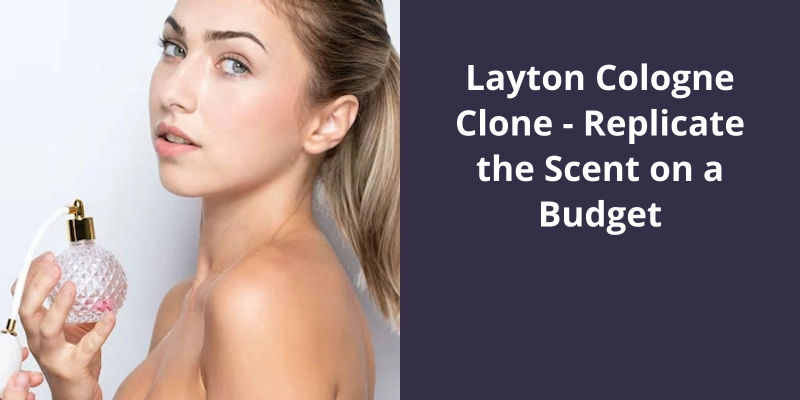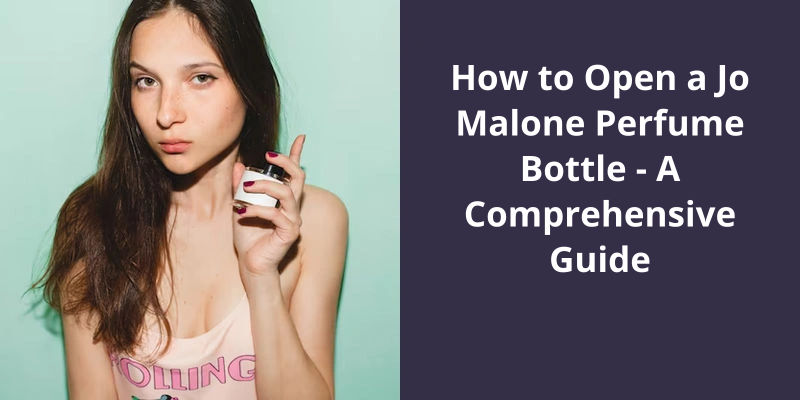Fragrance oil has gone bad when there’s a noticeable change in its smell, especially if it’s unpleasant or rancid. This key sign of degradation is usually due to an expired shelf life. Another sign is a change in the oil’s color, with it often becoming darker. Further, if the oil appears cloudy or has particles floating in it, it’s probably spoiled. Finally, if you use the oil and notice it causing skin irritations or allergic reactions, which weren’t an issue previously, it means the oil could be spoiled. As these oils don’t come with a precise expiry date, it’s essential to pay attention to these changes to determine whether the fragrance oil has gone bad.

What Happens When Fragrance Oil Expires?
When fragrance oil expires, there are a few noticeable changes that can indicate it’s deterioration. One common sign is a shift in scent. Instead of the pleasant aroma you’re accustomed to, an expired fragrance oil might emit an unpleasant or off-putting smell. If you notice a sour, rancid, or chemical-like odor, it’s time to discard the fragrance oil.
Another telltale sign of a fragrance oil past it’s prime is a reduced scent throw. Scent throw refers to the ability of the fragrance to disperse and fill a space with it’s aroma. If you find that the fragrance is no longer as potent or long-lasting as it used to be, it’s likely because the oil has expired.
You might observe the oil becoming cloudy, separating into layers, or even developing sediment or particles. These visual transformations can indicate the breakdown of the fragrance components, rendering the oil ineffective and potentially harmful to use.
It’s important to note that fragrance oils don’t necessarily have an expiration date printed on the packaging, as they can last for a significant amount of time if stored properly. However, exposure to heat, light, and air can expedite the deterioration process. Therefore, it’s crucial to store your fragrance oils in a cool, dark place, away from direct sunlight and extreme temperatures.
To ensure the best olfactory experience and safety, it’s recommended to discard old or expired fragrance oils and acquire fresh ones for optimal results in your fragrancing endeavors.
How to Properly Store Fragrance Oils to Prolong Their Lifespan
Properly storing fragrance oils is crucial to extending their lifespan and ensuring their freshness. Here are a few tips to help you preserve the quality and longevity of your fragrance oils:
1. Keep them away from direct sunlight: Exposure to sunlight can accelerate the degradation process of fragrance oils. Store them in a cool, dark place, such as a cupboard or drawer.
2. Maintain consistent temperatures: Fluctuations in temperature can impact the stability of fragrance oils. Keep them in an area where the temperature remains relatively constant, preferably between 50-70 degrees Fahrenheit.
3. Seal the containers tightly: Oxygen can cause fragrance oils to deteriorate more rapidly. Make sure the bottles or vials are tightly sealed to prevent air from entering.
4. Avoid contact with air and moisture: When using your fragrance oils, minimize their exposure to air and moisture. This can be achieved by promptly closing the container after use and avoiding unnecessary opening.
5. Store them upright: Storing fragrance oils upright can help prevent leaks or spills that could compromise their quality and potency.
By following these precautions, you can maximize the shelf life of your fragrance oils and enjoy their delightful scents for a longer period of time.
One effective way to assess the quality of perfume oil is through the use of fragrance test strips. These strips allow you to examine the scent right after application and monitor how it evolves over time, providing insights into it’s longevity and overall performance. By observing the aroma at intervals such as 5 minutes, 15 minutes, 30 minutes, and even after a prolonged period, you can gain a comprehensive understanding of the perfume oil’s development and endurance.
How Do You Test the Quality of Perfume Oil?
When it comes to determining the quality of fragrance oil, one effective method is to use fragrance test strips. These strips allow you to study the aroma of the perfume oil immediately after application and then observe how it changes over time. This can be done by evaluating the scent at various time intervals, such as 5 minutes, 15 minutes, 30 minutes, and even after several hours or a day have passed.
At the 5-minute mark, you may notice that some fragrance oils undergo a process called “top note evaporation,” where the initial burst of scent begins to dissipate. This is a normal occurrence, but it can be a sign of poor quality if the fragrance quickly loses it’s potency or develops an unpleasant odor.
As more time passes, the fragrance will continue to evolve and reveal it’s middle and base notes. A high-quality fragrance oil should have a well-rounded and pleasant aroma throughout the different stages.
It’s also important to consider the longevity of the fragrance. A good perfume oil should last on the test strip for an extended period of time, maintaining it’s intensity and character.
Remember that this method provides a reliable way to assess the fragrances initial scent, development, and longevity, allowing you to make an informed decision about it’s quality.
Comparing Fragrance Oils From Different Brands or Sources: Testing Multiple Perfume Oils Side by Side to Determine Which One Has the Highest Quality or Most Desirable Scent.
One way to determine if fragrance oil has gone bad or to compare fragrance oils from different brands or sources is by conducting a side-by-side test. This involves testing multiple perfume oils to determine which one has the highest quality or most desirable scent.
Preserving fragrance oils is vital to maintaining their quality and potency. To ensure their longevity, it’s important to follow certain guidelines. Firstly, purchase your fragrance oils from a reputable seller to guarantee their authenticity. Secondly, opt for dark bottles that will shield the oils from exposure to light, as it can degrade their scent. Furthermore, store the oils in a dry and cool area, as excessive humidity and heat can also degrade their quality. Additionally, transfer the fragrance oils to smaller bottles when they’re half full to reduce air exposure. Always remember to replace the cap tightly after each use to prevent evaporation. It’s also crucial to keep the oil clean by avoiding contact with water or other substances. Lastly, store the oils out of reach of children and pets, and take note of the purchase dates to ensure their freshness.
How Do You Preserve Fragrance Oils?
Preserving fragrance oils is crucial to ensure their longevity and effectiveness. The first step in preserving fragrance oils is to buy them from a reputable seller. This ensures that you’re getting high-quality oils that haven’t already gone bad. A trusted supplier will have proper storage conditions and quality control measures in place.
Once you’ve obtained your fragrance oils, it’s important to store them correctly. Using dark bottles is a recommended practice as it helps to block out light. Fragrance oils are sensitive to light and exposure can cause them to degrade and lose their scent. Dark bottles, such as amber or cobalt blue, provide a protective barrier against harmful UV rays.
In addition to using dark bottles, fragrance oils should be stored in a dry, cool area. Moisture and heat can accelerate the deterioration process of the oils. A cool and dry environment, such as a cupboard or drawer, will help to maintain their quality.
If you’ve a bottle that’s only half full, it’s recommended to transfer the oil into a smaller bottle. Always make sure to replace the cap tightly after each use to prevent air from getting in.
Make sure to use clean and dry tools when handling the oils to prevent any contamination. Any impurities or moisture that get into the oil can cause it to spoil or go bad.
Lastly, it’s essential to keep fragrance oils out of reach of children and pets. Not only can they be harmful if ingested, but they can also cause a mess if spilled. By keeping the oils in a secure location, you can prevent accidents and ensure their longevity.
To keep track of the dates, consider labeling your bottles with the purchase or opening date. This will help you know when it’s time to replace or discard your fragrance oils.
This will ensure that they continue to provide you with pleasant scents and enhance your environment.
How to Identify and Choose High-Quality Fragrance Oils
Fragrance oils are a popular choice for adding an inviting scent to various products such as candles, soaps, and perfumes. To ensure you’re using high-quality fragrance oils, there are a few factors to consider.
Firstly, check the ingredient list. High-quality fragrance oils typically contain natural or nature-identical ingredients. Avoid oils that list “fragrance” as the sole ingredient, as this could indicate a lower quality product.
Next, consider the scent. High-quality fragrance oils tend to have a well-balanced aroma that’s neither overpowering nor weak. It should be pleasing to your senses and not have any off-putting or artificial undertones.
Another important aspect is longevity. Good fragrance oils have a decent staying power, meaning they linger in the air or on your skin for a reasonable amount of time.
Lastly, packaging and reputation can be indicators of quality. Look for fragrance oils that come in dark-colored glass bottles, as this helps protect the oil from light degradation. Additionally, choose oils from reputable and trusted brands that are known for producing high-quality scents.
By considering these factors, you can identify and choose high-quality fragrance oils that will enhance your products or create a pleasant atmosphere in your space.
Our bodies are constantly evolving, and with each passing year, we experience a variety of changes. When it comes to perfume, these changes can have a significant impact on how a fragrance smells on our skin. As we age, our skin chemistry undergoes transformations that can interact with the ingredients in a scent, potentially altering it’s fragrance profile. Factors such as changing hormone levels, shifts in moisture levels, and even fluctuations in temperature can all contribute to the way a perfume smells on us. For those going through menopause, the hormonal fluctuations associated with this stage of life can further amplify the differences in scent perception. So, it’s no wonder that what once smelled heavenly on us may not evoke the same olfactory delight as we age.
Does Perfume Smell Different on You as You Age?
As we age, our bodies undergo various transformations, including changes in the chemistry of our skin. These changes can have a direct impact on how perfume smells on us. One significant factor is the fluctuation in moisture levels. As we get older, our skin tends to become drier, which can alter the way fragrance oils interact with our skin. This may result in a different scent profile compared to when we were younger.
Some fragrances may react more strongly or differently with our skins pH, leading to variations in how they smell on us.
Source: Do most perfumes get stronger with age?..
Now that you’ve properly applied the fragrance, let’s delve into the art of evaluating a scent.
How Do You Evaluate a Scent?
When it comes to evaluating a scent, there are a few key steps to follow in order to properly test a fragrance and determine if it’s gone bad. The first step is to start with a scent blotter, which are the white cardboard strips commonly found beside tester bottles on a fragrance counter. These blotting strips allow you to experience the initial burst of fragrance without applying it directly to your skin.
Once you’ve the scent blotter in hand, you can move on to the next step: spraying a cloud of perfume in a downward motion. This helps ensure an even distribution of the fragrance and allows it to settle onto the blotter. It’s important to spray from a reasonable distance to prevent overwhelming the strip with too much product.
After spraying the cloud, bring the scent strip to your nose and inhale deeply. Take the time to analyze the scent and pay attention to any off-putting or unusual notes. If the fragrance smells off, stale, or unpleasant in any way, it may be an indication that the fragrance oil has gone bad.
In addition to testing the scent on a blotter, you can also spritz a small amount of the fragrance onto your wrist. This allows the fragrance to interact with your skin chemistry and develop over time. After applying the fragrance, it’s important to wait at least 30 minutes before evaluating the scent. This waiting period allows the fragrance to evolve and settle, giving you a more accurate representation of it’s overall quality.
While waiting, it’s recommended to do something else, such as running errands or engaging in a different activity. This helps to distract your senses and prevent you from becoming too accustomed to the scent. By doing so, you can return to evaluate the fragrance with a fresh perspective and better judgement.
How to Evaluate the Balance and Composition of a Fragrance
- Conduct a sniff test to evaluate the balance and composition of a fragrance.
- Pay attention to the top notes, which are the initial scents you smell when you first apply the fragrance.
- Notice how the top notes blend into the middle or heart notes, which are the scents that emerge once the top notes have evaporated.
- Observe the base notes, which are the scents that remain after the fragrance has dried down.
- Consider the overall harmony of the fragrance and whether the different notes complement each other.
- Assess the longevity of the fragrance and how it evolves over time.
- Evaluate the projection or sillage of the fragrance, which refers to how far it projects and lingers in the air.
- Take into account your personal preferences and how the fragrance makes you feel.
- Seek out expert opinions, such as fragrance reviews or consultations with perfumers, for additional guidance.
Conclusion
However, exposure to extreme temperatures or direct sunlight can expedite the degradation process. It’s important to regularly inspect and test fragrance oils to ensure their quality and effectiveness in various applications. By maintaining proper storage and regularly monitoring the scent, one can confidently determine if fragrance oil has spoiled and requires replacement.





